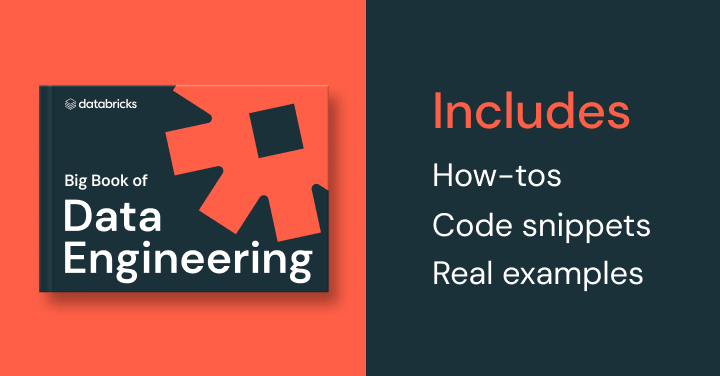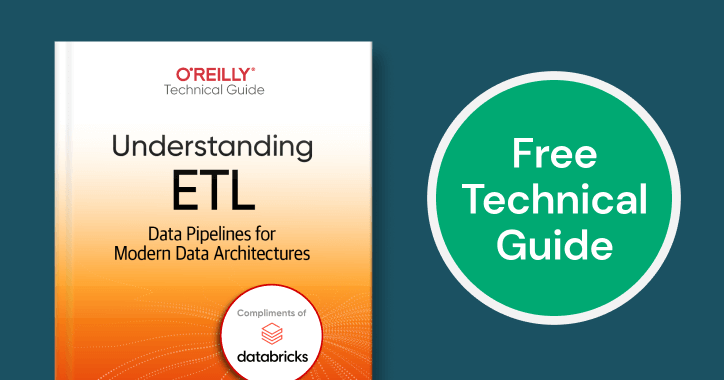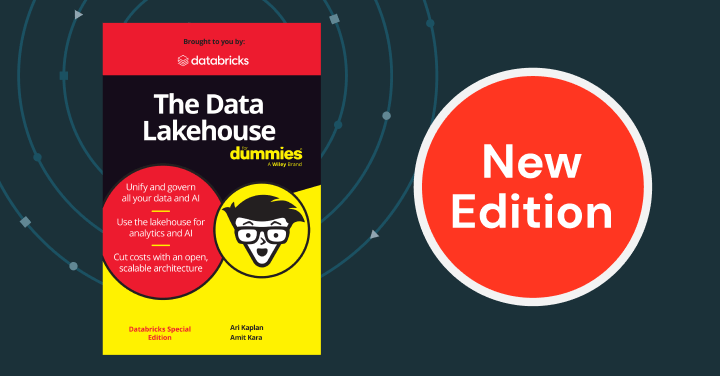Data Pipelines
What Is a Data Pipeline?
A data pipeline is a method in which raw data is ingested from various data sources, transformed, and then moved to a destination—such as a data lake or data warehouse—for analysis. It consists of a series of steps that are carried out in a specific order, with the output of one step acting as the input for the next step.
There are usually three key elements to any data pipeline: the source, the data processing steps and the destination, or “sink.” Data can be modified during the transfer process, and some pipelines may be used simply to transform data, with the source system and destination being the same.
In recent years, data pipelines have developed to cope with the big data demands of organizations, as large volumes and varieties of new data have become more common.
It is important that organizations take steps to ensure that pipelines experience no data loss, provide high accuracy and quality, and can scale with businesses’ varying needs. They should also be versatile enough to cope with structured, unstructured and semi-structured data.
Traditionally, data pipelines were deployed in on-premises data centers to handle the flow of data between on-prem systems, sources and tools. But, with data rapidly growing in volume and complexity, cloud data pipelines have emerged as one of the most scalable, flexible and agile types of data pipelines.
These solutions deploy pipeline data in the cloud via services like Amazon Web Services (AWS), Microsoft Azure and Google Cloud Platform (GCP). They’re designed to automate the movement and transformation of data between various sources, storage systems and analytics tools in a cloud environment. An example of this would be facilitating the movement of data from e-commerce websites and business intelligence software to cloud data warehouses.
Modern data pipelines need to support rapid and accurate data movement and analysis through big data pipelines. Cloud-native solutions provide resilience and flexibility, enabling efficient data processing, real-time analytics, streamlined data integration and other benefits.
Here’s more to explore
Data Pipeline Architecture
Every data pipeline starts with a solid technical foundation. Table creation and execution ensures that schema-defined datasets are ready for processing and downstream analysis, while efficient pipelines need to support parallel execution so tasks can run concurrently for optimal speed and throughput. Once established, data pipelines can typically be split into five interconnected components or stages. Each feeds into the next, creating a steady stream of data.
Data sources
The pipeline begins with your data sources — the internal and external systems that collect business and customer data. Most businesses generate data from multiple systems and software, with examples including streaming platforms, analytics tools and point-of-sale systems. Everything from transactional data to customer behavior can be valuable.
Data ingestion
At the ingesting stage, you gather the data from your multiple sources and bring it into the data pipeline. Application programming interfaces (APIs) read this data and ingest it either at specific intervals (known as batch mode) or in real time (known as streaming mode).
However, not all data needs to be ingested. To prevent your pipeline from becoming overwhelmed with irrelevant, unusable data, data engineers evaluate variety, volume and velocity to ensure that only valuable data is ingested.
This can be done manually or — as is typically the case with cloud data pipelines — automated to improve efficiency.
Data processing
Once ingested, the raw data must now be converted into a standardized format and structure.
At this stage, data goes through various processes, including:
- Data normalization
- Cleansing
- Validation
- Aggregation
- Transformation
One of the main goals is to standardize data formats, reconcile data discrepancies, and align variable definitions to promote data consistency and reliability. Other tasks include filtering out irrelevant data and mapping coded data.
To maintain code quality and deployment efficiency, CI/CD practices help automate testing, validation and the deployment of pipeline updates. Some pipelines may include a compilation step to validate code and generate execution plans ahead of time.
Engineers must also manage dependencies between pipeline steps and among libraries to ensure reproducibility and reliability. Meanwhile, checkpoints can save the progress of your data through the pipeline and allow it to resume from the past point of failure. This not only saves time and resources but also ensures continuity in complex pipelines.
When errors do occur, retry mechanisms can make sure that any issues that pop up don’t cause bigger problems throughout the pipeline. Ultimately, the aim is to ensure the information is as complete and accurate as it can be to fuel valid, reliable insights.
Data storage
The processed and transformed data is then stored in a durable, accessible and secure repository. Where businesses choose to store data depends on their accessibility, cost and scalability needs.
Typically, data will be housed in a centralized data warehouse or data lake, where it can be retrieved for analysis, business intelligence and reporting.
Data analysis
Data scientists and analysts leverage data within the centralized repository, utilizing various methods and tools to extract valuable analytics, such as patterns, relationships, trends and anomalies.
This includes advanced SQL techniques, machine learning and various types of statistical analysis methodologies. The insights they extract are presented using data visualizations, such as reports with charts, graphs and heat maps.
Types of Data Pipelines
Various types of data pipelines are available, each with different attributes that make them suited to different use cases.
Batch Processing Pipeline
Batch pipelines are, as the name suggests, used to process data in batches. If you need to move a large number of data points from a system, such as your payroll, to a data warehouse, a batch-based pipeline can be used.
The data is not transferred in real time; instead, it's usually allowed to build up and be transferred on a set schedule.
Batch processing is often more cost-effective for large amounts of data and is ideal for scenarios where latency in a workflow is not the primary concern, such as data warehousing, periodic reporting and large-scale analytics.
Streaming Data Pipeline
A streaming pipeline can be used to process raw data almost instantly. The stream processing engine processes data in real time as it is generated, making this a preferred method when an organization needs continuous data ingestion and processing. Some examples are fraud detection, live analytics dashboards and real-time recommendation systems.
Benefits of Data Pipelines
“Data pipeline” is a term that encompasses a variety of processes and can serve various purposes. They’re an important part of any business that relies on data.
Here, we’ll discuss some of the main benefits of data pipelines for modern businesses:
- Data accuracy: Data pipelines automate the cleaning and standardizing of data, eliminating error-prone manual data handling and reducing silos and redundancy. As a result, you acquire consistent, reliable and accurate data that can be leveraged to access equally reliable insights.
- Faster, cost-effective data integration: Data pipelines automatically standardize data. This makes planning and implementing new data integrations much less costly and labor-intensive, speeding up the time to value of new integrations.
- Flexibility, agility and scalability: A cloud data pipeline is inherently scalable, providing immediate elasticity in the face of dynamic data growth. With agile adaptability to evolving data types, sources and needs, your data pipeline empowers exponential expansion in alignment with changing business and customer needs.
- Real-time data accessibility and analytics: Modern businesses across industries rely on access to real-time data, whether for employing dynamic e-commerce pricing strategies or making critical patient healthcare decisions. Data pipelines provide fast access to real-time data, driving operational efficiency, cost-effectiveness and better end-user experiences.
- Data governance and security: A robust data pipeline with integrated governance policies, data controls, audit trails and repeatable patterns helps you maintain data security and meet regulatory standards for data handling.
- Decision-making efficiency and accuracy: The automated processing of data not only presents teams with high-quality data that leads to more accurate decision-making. It also streamlines and eliminates manual tasks, allowing more time for meticulous data analysis at scale. This results in more informed decision-making and quicker access to opportunities.
Benefits of Data Pipeline Management Tools
The more data you accumulate as your business grows, the trickier it becomes to manage. A convoluted, chaotic and manually piloted data pipeline produces poor workflows and duplicate, irrelevant or inaccurate data, which can cause far-reaching operational inefficiencies and revenue loss.
For these reasons, data pipeline management tools are critical for orchestrating and monitoring data, ensuring that it flows efficiently through your systems while remaining accurate, reliable and accessible.
Orchestration streamlines and optimizes workflows by automating repeatable tasks and consolidating siloed systems. Data orchestration plays a key role in your wider orchestration strategy, as it automates the collection, aggregation and organization of information from multiple data centers. Thanks to this standardization, users have access to high-quality data that is consistent, complete, valid, accurate, unique and up-to-date.
Additionally, a well-designed data pipeline gives you insight into your data at every stage. Effective data pipeline management tools can provide key insights into where your most valuable (or irrelevant) data comes from, as well as any bottlenecks or inefficiencies in your processes.
Data Pipelines vs. ETL Pipelines
To put it simply, ETL is a type of data pipeline, but not all data pipelines are ETL pipelines.
The ETL pipeline meaning is best understood through its component parts: extract, transform and load — three interdependent processes involved with data integration. These specific processes are used to pull data from one database and move it to another, such as a cloud data warehouse, where it can be used for data analysis, visualization and reporting. The ETL data pipeline is the implementation detail used to accomplish these tasks.
Some data pipelines don't involve data transformation, and they may not implement ETL. For instance, the final step in a data pipeline could be to activate another workflow or process instead.
How to build a data pipeline
How a data pipeline is built and implemented will often be decided by the individual needs of a business. In most cases, a production data pipeline can be built by data engineers. Code can be written to access data sources through an API, perform the necessary transformations, and transfer data to the target systems.
However, without automation, this will require an ongoing investment of time, coding, and engineering and ops resources. By using Lakeflow pipelines, it's easy to define end-to-end pipelines. Rather than manually piecing together a variety of data processing jobs, you can specify the data source, the transformation logic and the destination state of the data. Spark Declarative Pipelines will automatically maintain any dependencies — cutting down on how much time you need to manually spend tuning it.
Along with leveraging automation, here are some other best practices to follow when you’re building a data pipeline:
Define strategic goals
Establish the core objectives of your data pipeline initiatives along with the key performance indicators that you’ll use to measure success. This will give you a clear project scope, guide you toward the appropriate data models, and direct the flexibility, complexity, and scalability of your pipeline.
Gather the right resources
What data pipeline tools and technologies do you need to build and maintain a robust architecture? What are your labor and budget requirements? Identify and allocate resources in alignment with your goals and unique data pipeline needs (e.g., the volume and variety of your data).
Establish your data sources and ingestion methods
Data can be collected from various sources: internal databases, cloud storage, real-time data streams, etc. Locate potential data sources, establish the format and volume of data they produce, and identify the methods you’ll use to extract and integrate the data into your pipeline.
For instance, will your data ingestion pipeline use batch or real-time ingestion? What communication layer will be required? What role will your chosen tools and technologies play in the ingestion process?
Create a data processing strategy
What methods will you use to turn raw data into structured data ready for analysis? At this stage, it’s critical to establish the data transformation approaches you’ll be using (such as data cleaning, formatting and enrichment). Additionally, define the measures you’ll take to reduce data redundancies and irrelevancy.
Be strategic about storage
Where you store processed data will depend on various factors, including data volume, accessibility needs and use cases. In alignment with these considerations, decide on your storage solution (data warehouses, data lakes, etc.), as well as the location (in the cloud or on-premises). You should also consider where your most valuable data needs to be stored for maximum accessibility.
Establish a data workflow
Data pipelines are full of dependencies. To drive operational efficiency and reduce the risk of bottlenecks, design a plan that details the sequence of operations within your data pipeline. Establish task orders and dependencies, as well as your error handling and data recovery protocols.
Set up a monitoring and governance framework
The long-term health of your data pipeline relies on continuous monitoring to maintain security, reliability, efficiency and performance. Track data as it enters and flows through your pipeline, keeping an eye out for bottlenecks, inefficiencies and potential vulnerabilities. A monitoring framework facilitates the quick identification and mitigation of potential risks, increasing sustainable data pipeline value.
Implement a reliable data consumption layer
The consumption layer is where end users access processed data and harness it to acquire insights. Pinpoint each data pipeline tool you’ll leverage to streamline data consumption — such as business intelligence tools, APIs and reporting tools — and define how these tools will connect to your data.
Optimize your data pipelines with serverless architecture
Another option to consider when building your data pipeline is serverless architecture. This model involves using infrastructure that is owned and managed by cloud computing companies.
With serverless Spark Declarative Pipelines, for example, you can focus on data ingestion and transformation instead of the configuration and deployment of infrastructure. The resources for your pipelines will be managed by Databricks, providing automatically optimized computing resources with improved utilization, throughput and latency at a lower cost than classic Spark Declarative Pipelines.
Future of Data Pipelines
The future of data pipelines is declarative. Customers need to handle increasingly complex transformations on a larger scale and at supercharged velocity — all while optimizing costs. Declarative Pipelines on the Apache Spark Open Source Project brings together various technologies into just a few lines of SQL to help you build an end-to-end production pipeline.
Spark Declarative Pipelines simplifies complex data workflows by automating task execution, retries and failure recovery. With just a few lines of code, users can process data changes efficiently and without expertise in streaming. Its incremental engine avoids redundant processing, which can boost performance and reduce manual coding for real-time and batch data.
Data scientists and companies looking to leverage high-quality data while enhancing performance should keep abreast of trends like these to fully optimize their data pipelines now and in the future.
Best Data Pipeline Tools
There are a variety of tools and apps available, such as Apache Spark™, that can be used to build and maintain data pipelines, facilitating better data management and business intelligence. As these apps can require a large amount of manual optimization, they are a good choice for organizations with the necessary expertise to build and customize their own pipelines.
Databricks Spark Declarative Pipelines is a great way to run Apache Spark for data pipelines, offering users automation and reduced complexity, as well as the benefits of serverless, Databricks runtime and platform integrations. This solution makes it easy to build and manage reliable batch and streaming data pipelines that deliver high-quality data on the Databricks Data Intelligence Platform. Spark Declarative Pipelines helps data engineering teams simplify ETL development and management with declarative pipeline development and deep visibility for monitoring and recovery. Plus, these intelligent data pipelines include automatic data quality testing, preventing bad data from impacting your work.
How do customers benefit from Spark Declarative Pipelines?
One customer that benefits from Spark Declarative Pipelines is the Volvo Group Service Market Logistics (SML) team. They are responsible for managing and distributing a massive spare parts inventory for Volvo Group worldwide across the entire chain, from supplier to truck dealer. With roughly 200,000 new Volvo trucks sold yearly (and millions more on the road) and hundreds of thousands of spare parts spread across warehouses globally, keeping track of every spare part — and ensuring accurate, on-time delivery — is daunting.
Volvo rolled out the Spark Declarative Pipelines automated operation feature to bolster processes and improve efficiency around routine tasks, including automatic checkpointing, background maintenance, table optimizations, infrastructure autoscaling and more.
By deploying Spark Declarative Pipelines, Volvo has realized new capabilities and efficiencies, from global reporting and end-to-end order tracking to real-time inventory processing. Additionally, the real-time data ingestion and processing also helps Volvo SML prepare for expansion.
No matter what you need to orchestrate and monitor in your data pipelines and beyond, orchestrators like Databricks Lakeflow Jobs are essential for defining, managing and automating complex workflows to make data pipelining simple.


